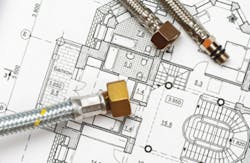On May 6, 2013, the Health Ministry of Saudi Arabia reported the third victim and the second death caused by a severe acute respiratory syndrome (SARS) — a disease known as coronavirus, stemming from a family of viruses that can cause the common cold, flu-like symptoms or SARS. Some public health officials around the world suspect the number of people in Saudi Arabia who have been stricken by the disease may be underreported. One explanation for this is that some may have had mild cases, interpreted them as bad colds or the flu, and did not see a doctor. Other public health officials have suggested that to calm public fears, the kingdom may be purposely keeping quiet about the numbers until they have a better understanding of exactly what the virus is and how it may be spreading.
We all remember the SARS epidemic that began in Asia in 2002 and initially impacted just Hong Kong, China and other nearby Asian countries. However, in time SARS was reported in more than two dozen countries around the world including Canada and countries in South America and Europe. According to the World Health Organization (WHO), by March 2003 SARS was recognized as a global health threat, but by about August, the disease had essentially been contained as few cases were being reported. Eventually it was estimated that more than 8,000 people had been diagnosed with SARS and some 800 people had died of the disease.
But, what does SARS have to do with the water technology industry? As we shall soon see, quite a bit.
How SARS spreads
It is hoped that at this point, health officials in Saudi Arabia are working to determine exactly how the three reported cases of SARS were contracted. SARS appears to spread by close person-to-person contact.
According to the Centers for Disease Control and Prevention (CDC), close contact refers to having cared for or lived with a person known to have SARS or having direct contact with respiratory secretions and/or body fluids of a person known to have SARS. The CDC says that some of the most common examples of close contact include kissing, embracing, sharing eating or drinking utensils, having close conversation (within three feet) and any other direct physical contact between people.
The SARS virus can also spread when contaminated droplets from a sneeze or a cough from an infected person land on surfaces that are later touched by someone else who then touches her or his nose, mouth or eyes. And the SARS virus can also become airborne. People who breathe air contaminated with the virus can become ill, and this is where the water technology industry gets involved.
According to results of studies conducted by Julius Ballanco, president of J.B. Engineering and Code Consulting, and released by the WHO in September 2003, many people in Hong Kong contracted the SARS virus by inhaling contaminated air released from the drainage pipes of a large apartment complex in the city.
SARS, plumbing and drains
Some people in Asia wash or dry their clothes in their kitchen or bathroom so most newer homes and apartments in many Asian countries have drainage systems in those rooms. The drainage pipes can carry away water from the laundry that drips onto the floor.
The Ballanco study found that fecal droplets containing the SARS virus from an infected person had developed in the drainage pipes of the Amoy Apartments, which soon had the single highest number of SARS cases during the epidemic. Approximately 300 people became ill with SARS in these apartments and 35 died.
When residents of the complex turned on their blowers to remove odors from kitchens and bathrooms, it was discovered. The blowers essentially sucked the infected droplets up the drainage pipes and into the apartments. But, even though the floor drains had J-bend (or U-shaped) pipes underneath, because many people did not use a lot of moisture to clean their kitchen and restroom floors, the water contained in the J-bend pipes evaporated, allowing contaminated vapors to enter some of the apartments.
The same thing frequently happens in North America in schools that are closed for summer vacations. Usually we know when water in a J-bend pipe has evaporated when sewer odors are detected. In the Amoy Apartments, a far worse problem developed because of this evaporation.
Prevention
There are several ways this drain pipe problem could have been prevented. The most practical was for the managers of the apartment complex to encourage all tenants to pour a small amount of water in the floor drainage pipes every week.
However, being practical is not always enough when dealing with hundreds of people living in the same complex. Another option water technology professionals should know about is to pour liquid primers or “ever prime” in drainage pipes to keep water in the J-bend pipe from evaporating. These are often used in schools and can prevent evaporation for several months.
As to the SARS cases now surfacing in Saudi Arabia, health officials should look to see if plumbing issues could be the culprit there as well. When Ballanco completed his study there were some skeptics. However, in time most realized his findings were sad but true.
A frequent speaker and author on water conservation issues, Klaus Reichardt is founder and CEO of Waterless Co. Inc. in Vista, Calif., maker of waterless urinals and other restroom products. He founded the company in 1991 with the goal to establish a new market segment in the plumbing fixture industry with water conservation in mind. He may be reached at [email protected].


